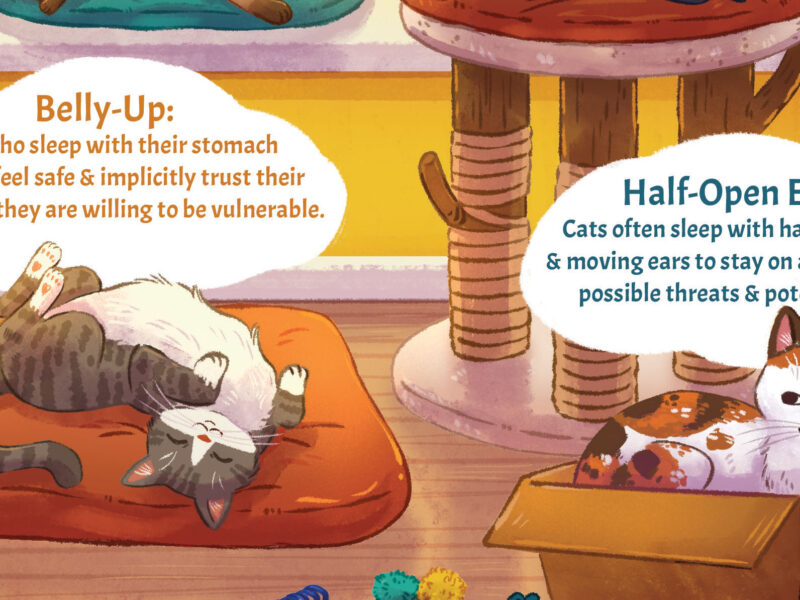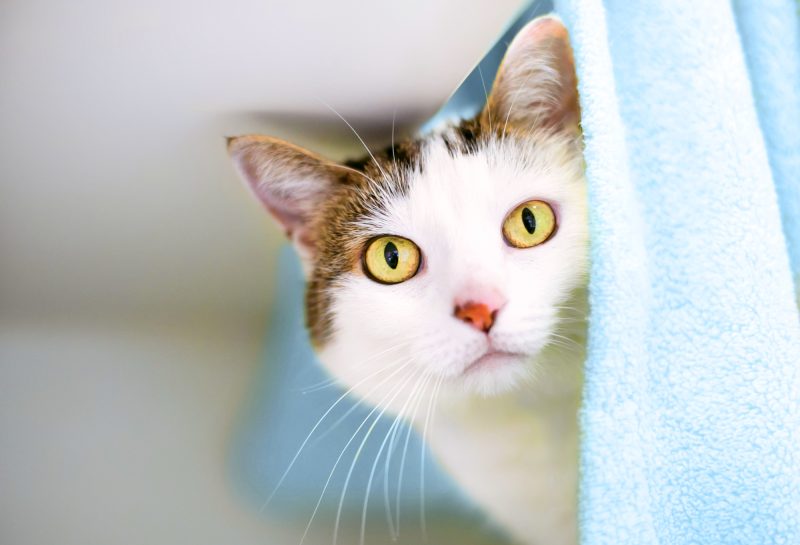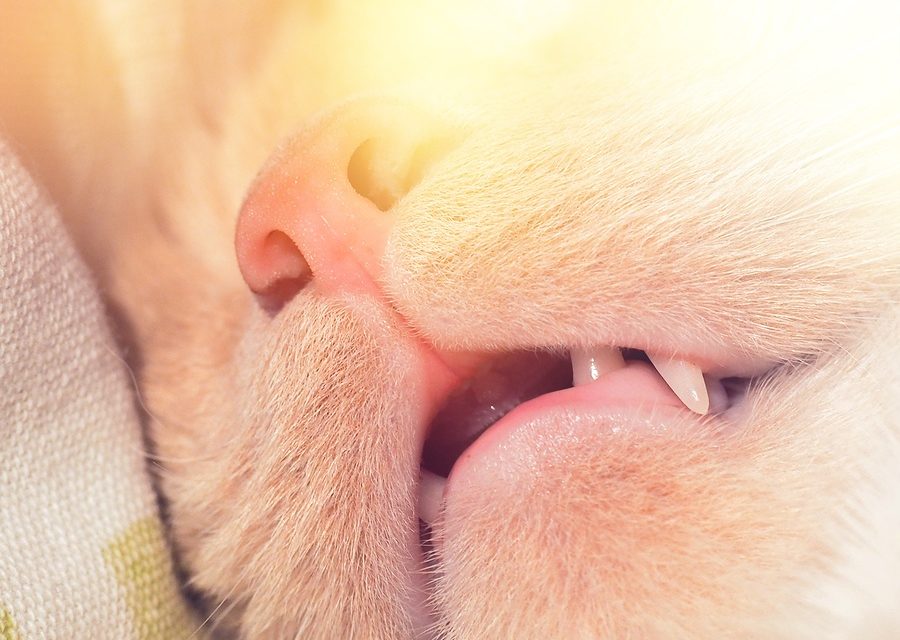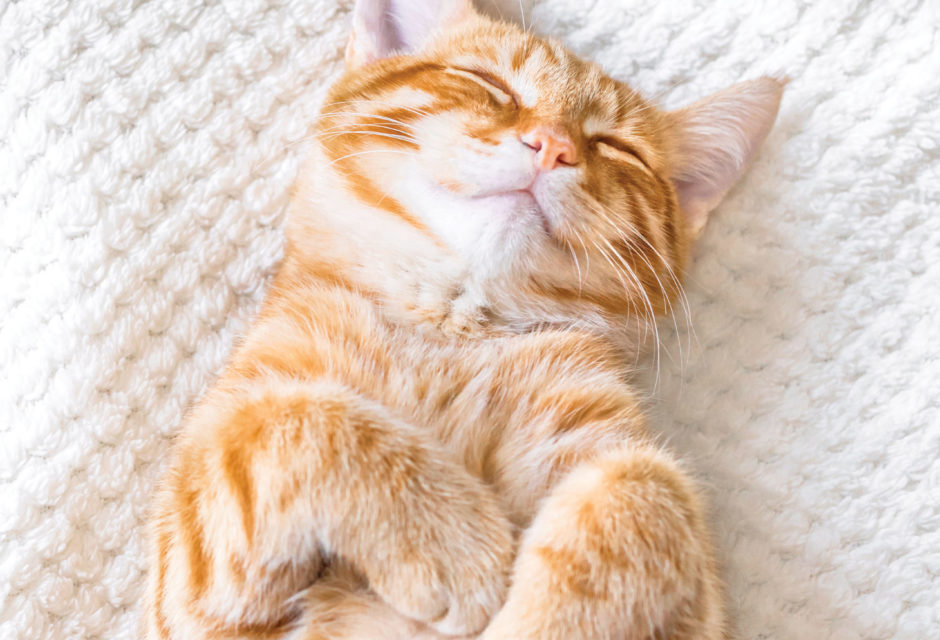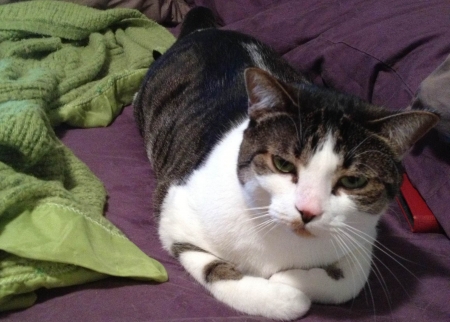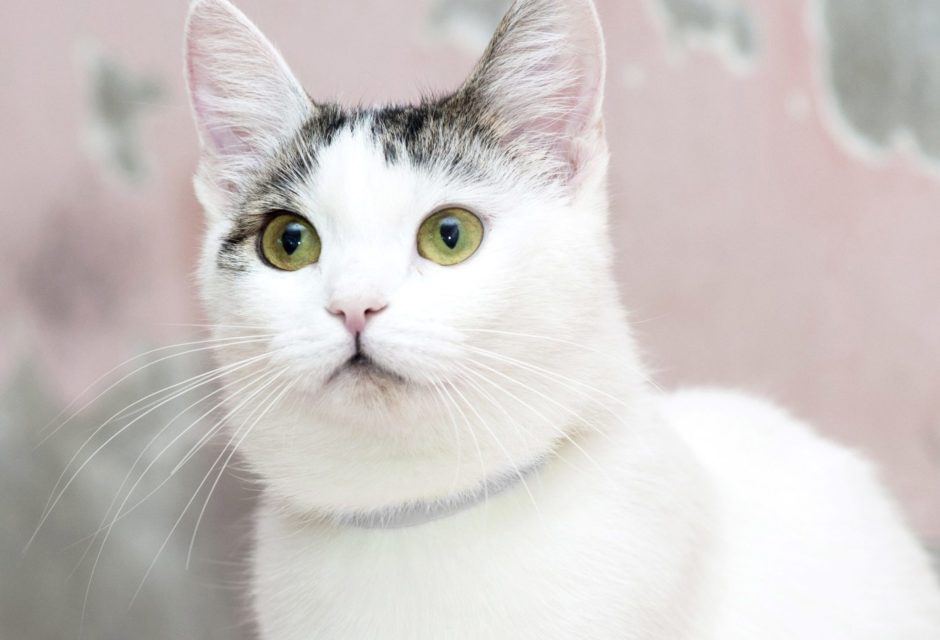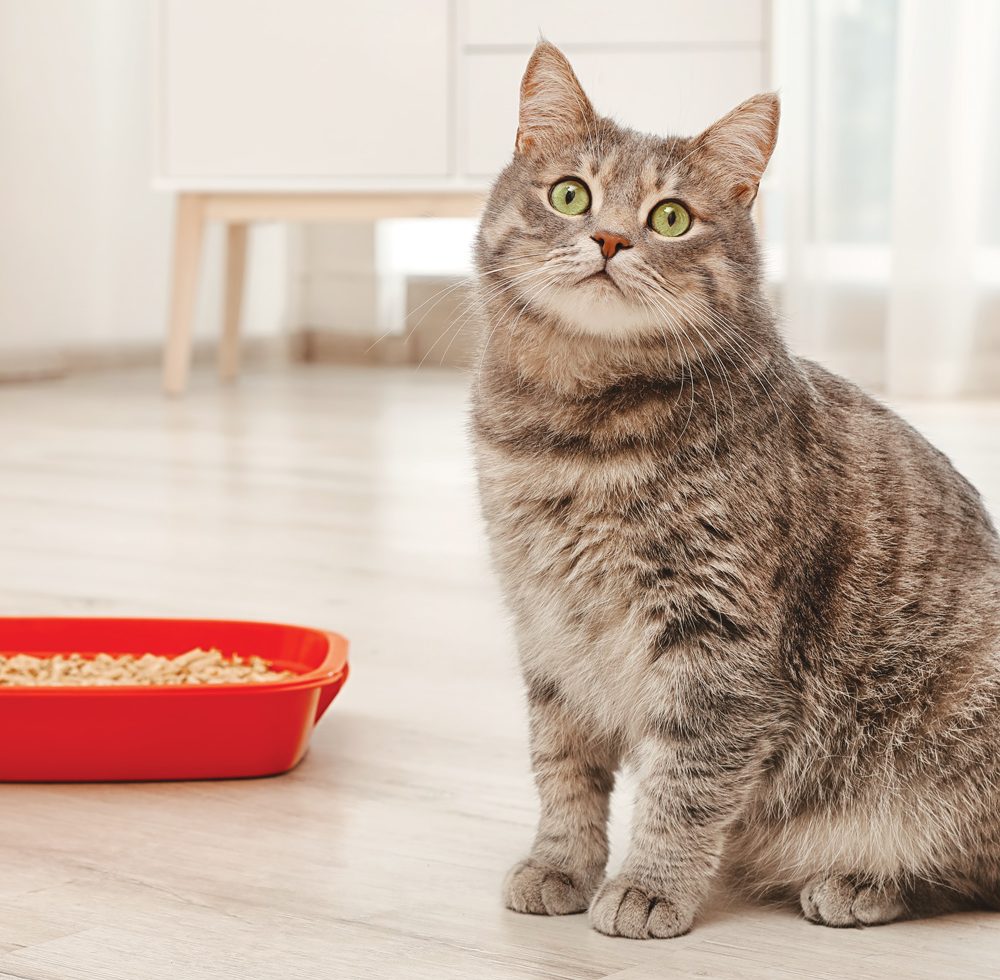
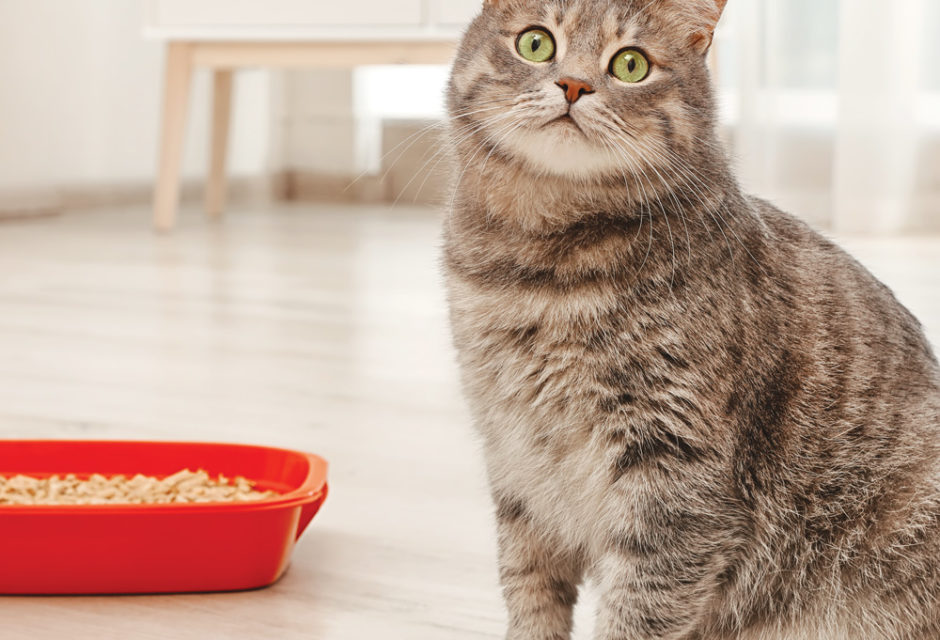
“Behaviour Problem” or Medical Issue?
Is a medical issue actually the root cause of your cat’s challenging behaviour? Here’s what to look for
Cats are masters of disguise. In the animal kingdom, cats win the gold medal for their ability to mask and hide pain. Their outward appearing symptoms can be so subtle that oftentimes changes in behaviour are the only signal that something is amiss. Sadly, the root cause of the behaviour changes frequently go unrecognized by many human caregivers until they are blatantly obvious or difficult to live with. There are myriad behaviours that are in fact caused by underlying medical issues. Here are some of the most common.
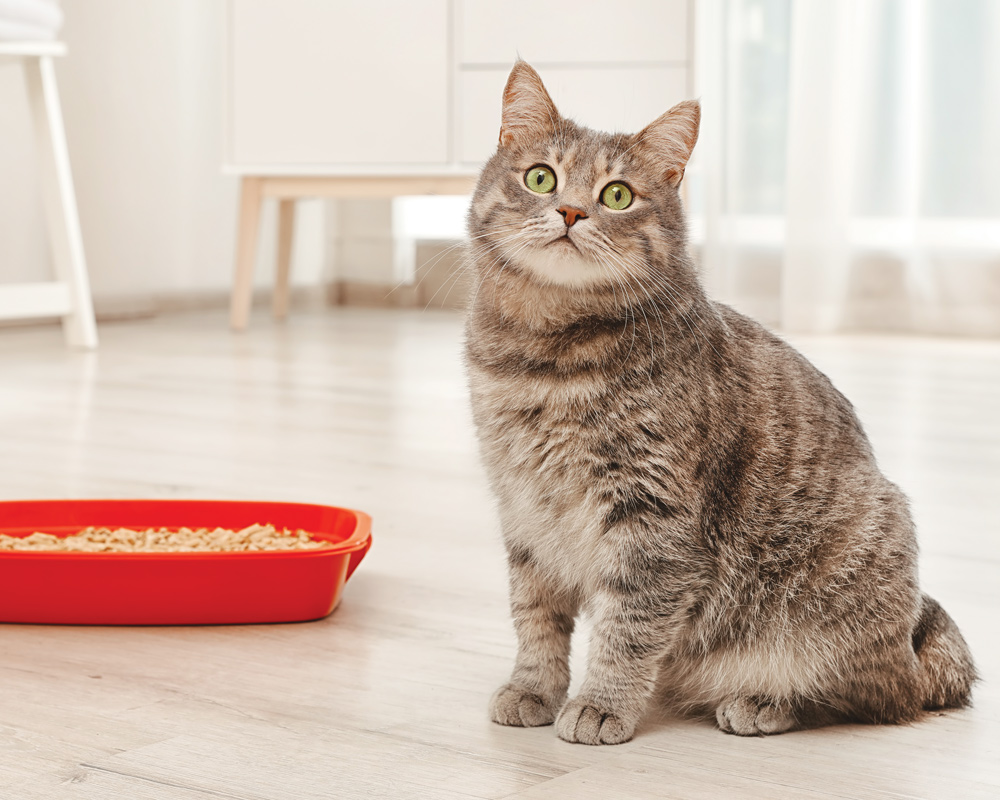
Photo: bigstock.com/New Africa
PROBLEM:
» Pooping Outside the Box
Elimination outside of the litter box may have absolutely nothing to do with the cat not liking the box, its location, or the cleanliness, factors often discussed as potential causes of problem elimination cases. An often overlooked cause is discomfort while using the box due to an underlying medically based pain, which can result in long-term litter box avoidance. This avoidance can persist long after the medical problem has been resolved.
POSSIBLE CAUSES:
» Constipation
Typically, cats who are constipated defecate only one to two hard, dry fecal balls at a time. The stools are usually deposited in a trail around the house. Activity aids peristalsis (colonic movement) and creates that sudden urge to go. Usually, these cats urinate in the box and are normal in most every other way.
Cats who are constipated will often urinate while straining and pushing. These cats typically start off in the litter box. They strain and push, dig, and even cover as if they are “done.” They then walk a room or two away from the box, and that activity aids the movement of the bowels, so out comes another random fecal ball. This fecal ball may be nestled in a small puddle of urine. Or perhaps only urine is found with no feces at all. Could the family dog have eaten it? Or did nothing else make it out but urine?
Another sign of constipation can be vomiting, though this is secondary to straining. The cat is too full of feces, which puts pressure on the stomach and does not allow enough room for food, thus causing the cat to vomit.
Some cats develop perianal hernias caused by long-term straining and pushing. Until constipation and motility needs are addressed, the “behaviour problem” cannot be resolved. The cat will associate any changes made to the box, its location, etc. with the same underlying discomfort.
» Full Anal Glands
Full or impacted anal sacs could be making the stool painful to push out, creating a negative association with the litter box or simply creating straining.
Scooting is another common complaint that is often caused by an anal gland issue or a situation in which the cat is simply too large or arthritic to be able to reach their rear and effectively groom after eliminating.
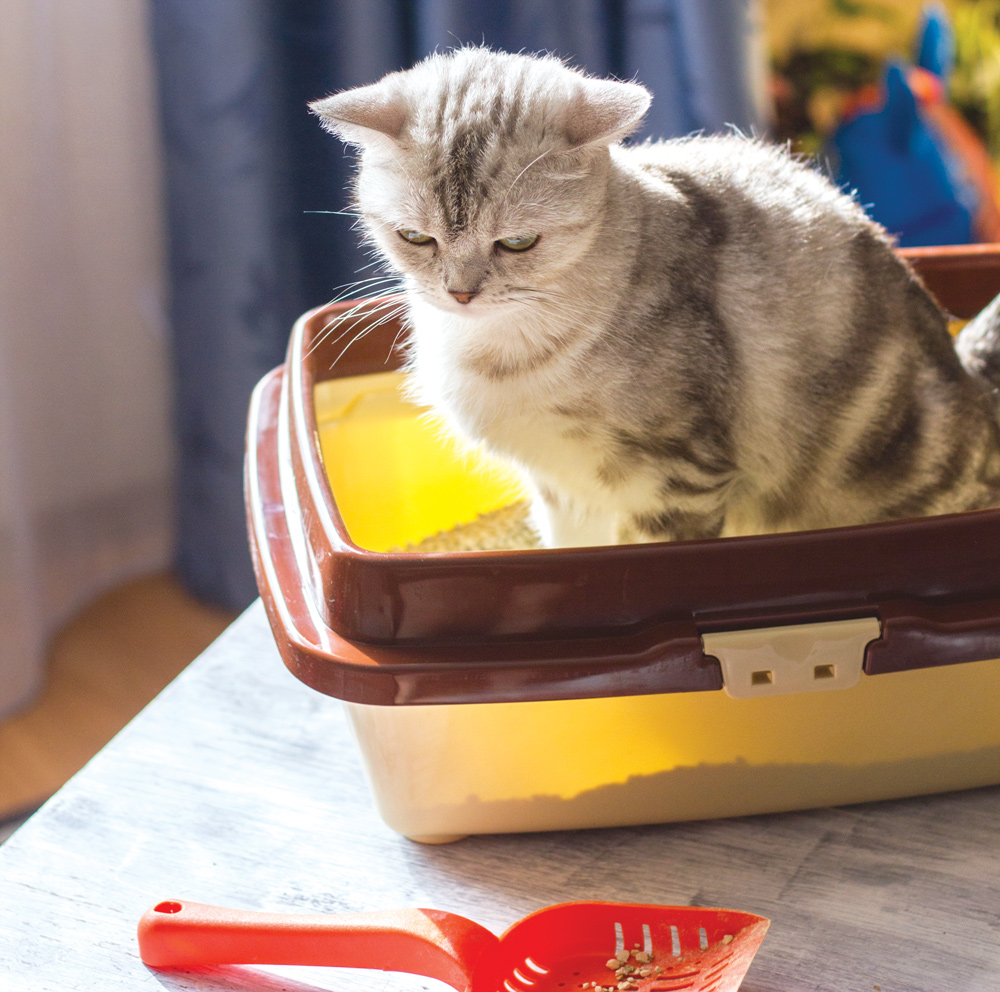
Photo: shutterstock.com/Sharaf Maksumov
PROBLEM:
» Urinating Outside the Box
Urinary crystals, bladder stones, bacterial infections, cystitis, vaginitis, urethritis, or just having a dirty tush can all be reasons for a cat to urinate outside the box. It could even be logistics.
POSSIBLE MEDICAL CAUSES:
» Logistics
Does the diabetic cat or chronic kidney disease cat have a behaviour problem if they choose to urinate on the dining room rug? In most cases, they really don’t. These cats need to urinate more frequently and more volume. Oftentimes, the box they have been provided is too full, so from their perspective, there is no clean place to stand so they find a place that is absorbent and clean.
In many cases, this problem can be resolved by:
- Scooping the litter box more often
- Replacing the current box with a larger one
- Adding more litter boxes throughout the home—especially where the cat has chosen to urinate
- Offering a puppy pad as an option if a substrate preference has already developed
» Urinary Crystals
Cats who are urinating outside the litter box could have a recurrence of a previously diagnosed urinary crystal issue, one that, from the owner’s perspective, was addressed and resolved.
Prescription urinary food is now this cat’s medicine. It is to be fed for life or until that individual’s needs change. If the cat goes back to eating what they were eating when they were diagnosed with struvite crystals specifically, the problem is likely to recur.
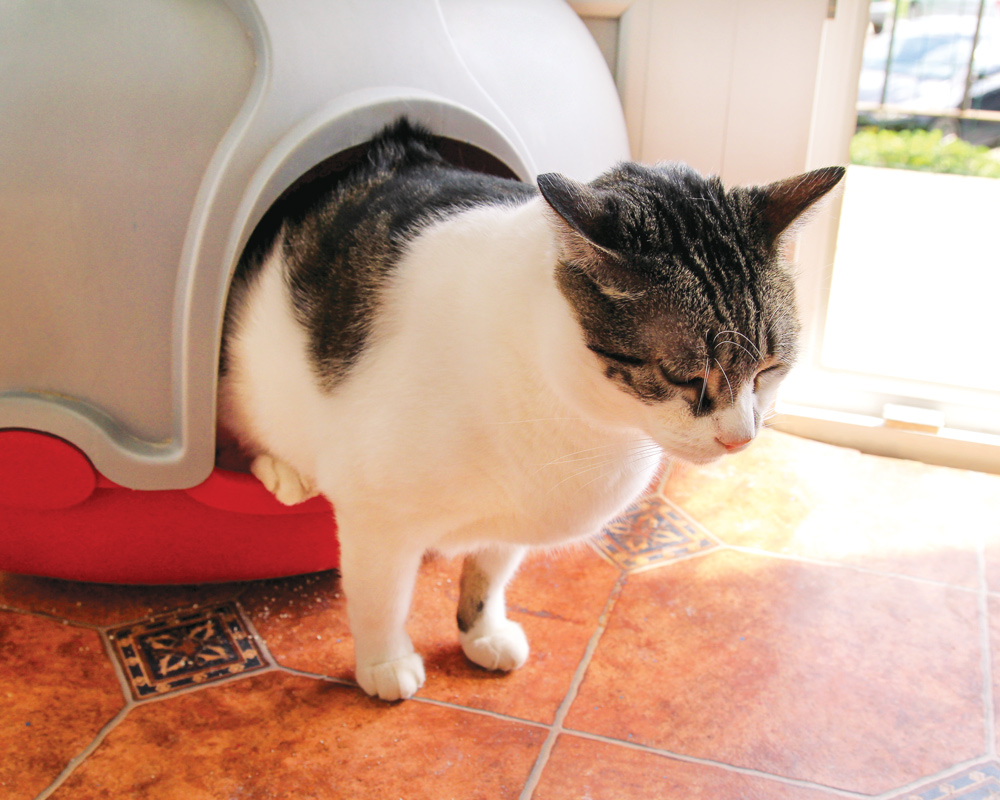
Photo: shutterstock.com/Zoran Photographer
» Urinary Cystitis
Cats with cystitis are often acutely treated but not medically managed for the long haul, which is key to getting the cat back in the litter box.
Cystitis usually requires long-term chronic pain management and environmental modification, as stress is the most common reason for this medical problem. They may require anti-anxiety medications to help them cope, but they need to play more, be challenged, eat from food puzzles, and be offered an enriched environment. Cats need to feel in control. That gives them great comfort, hence decreasing stress, lessening bladder pain, and in turn, increasing litter box compliance.
» Arthritis
Arthritis is grossly under-diagnosed and under-treated in cats because their symptoms are more subtle.
What are the symptoms of arthritis in a cat?
- Elimination outside the box
- Lack of grooming, especially the posterior half of the body and along the spine
- Reluctance to be petted, especially along the posterior half of the body
- Irritability
- Limping
- Lack of ability to jump directly up onto things that were previously a breeze to achieve
Think about what it will be like to walk on the beach when you are 85 years old. It is tough to posture on sand when hips and knees do not work the way they used to. Hence, stable carpet is chosen!
» Declawing
The paws are arguably one of the most sensitive parts of a cat’s body. Cats bear 60 percent of their body weight on their front limbs. After an onychectomy, the technical term for declawing, humans ask these amputees to walk on gravel, pine nuggets, crystal silica litter, and compressed newspaper pellets. Declawed cats may choose to eliminate on carpets, beds, couches, laundry piles, or other soft surfaces. Sometimes, anything smooth that is unlike the painful texture of litter will suffice. A declawed cat a handicapped cat. These cats need pain control, arthritis support, and soft substrates.
» Obesity and Arthritis as They Relate to Elimination Outside the Box
Many clients think their cat is peeing or pooping outside the box when in reality, all the cat is doing is overshooting the pan! The puddle of urine or the feces that is right outside the edge of the litter box is not a behavior problem. The box is too small, the cat is too large, or both.
The senior cat with arthritis is often to blame. They cannot squat as low to urinate as they once could, so some goes over the edge, or they mis-aim while defecating. Get a bigger box with high sides, cut a low opening to ease access, and treat the cat’s arthritis!
How about the obese cat who hasn’t seen their rear in years? That cat is not eliminating outside the box due to a behaviour problem. She is itchy, uncomfortable, and needs to have a sanitary shave and to lose weight! Their cat parents need to learn to clean their tushes at home!
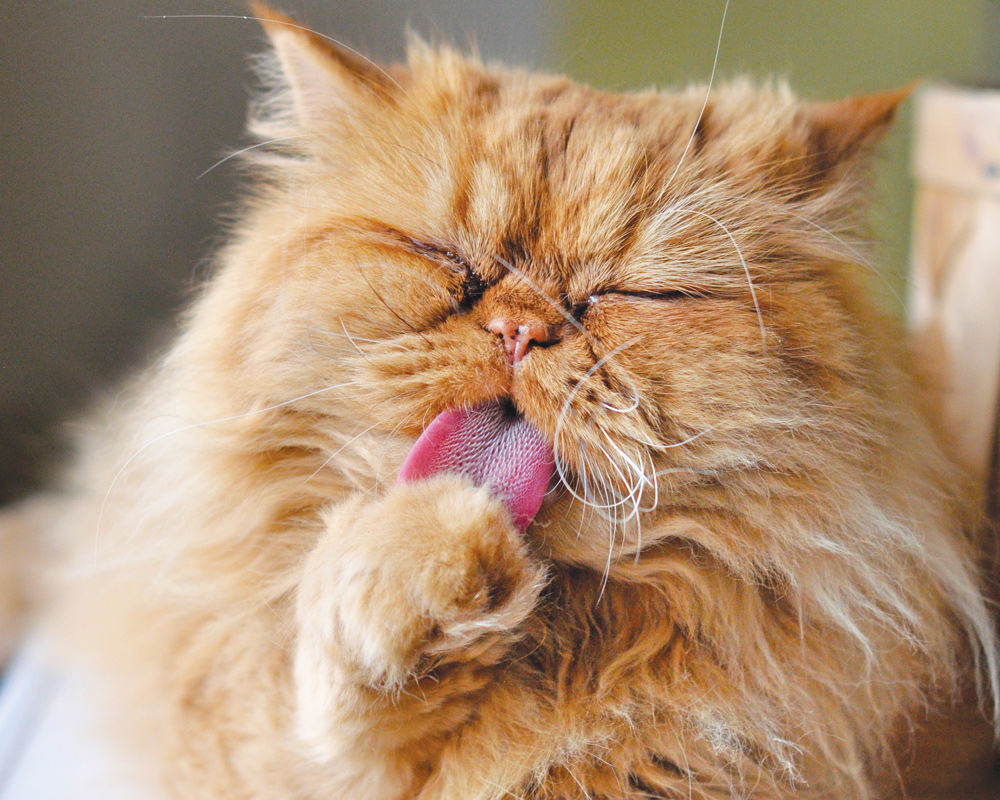
Photo: shutterstock.com/Zanna Pesnina
PROBLEM:
» Over-Grooming
POSSIBLE CAUSES:
Most of us are aware that cats may groom over sources of pain. It is a self-soothing behaviour. If a cat who is eliminating outside the box has a bald belly, please have their urine checked, and be assessed for constipation/GI abnormality, and check under their tail. They may simply be too large to reach, so they groom their belly bald doing the best they can!
Symmetrical over-grooming is a coping mechanism for stress, but not always. A cat with barbered hair and thin “racing stripes” down their back on either side of their tail may have an anal gland problem. Or, if the cat is overweight, they may be unable to reach any further.
Symmetrical over-grooming of the forelimbs is commonly stress-related but could also easily be arthritis pain or post-declaw pain.
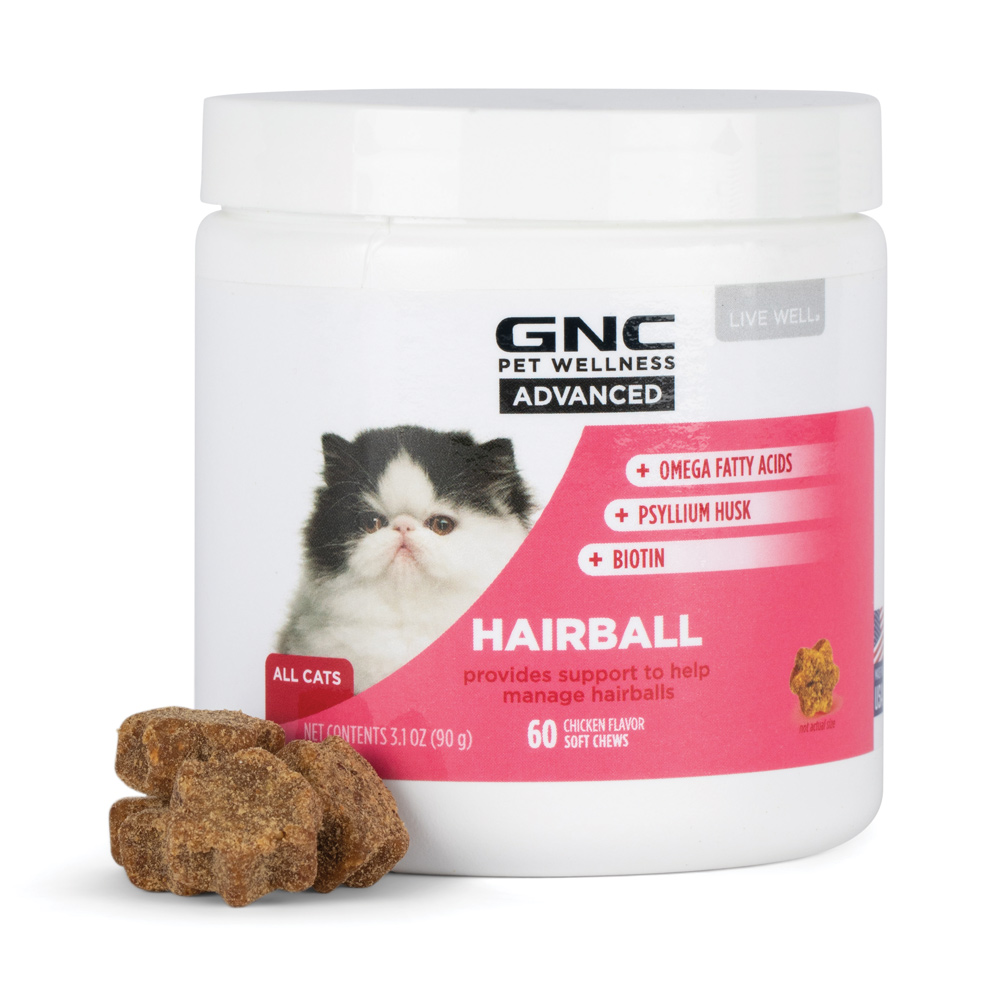
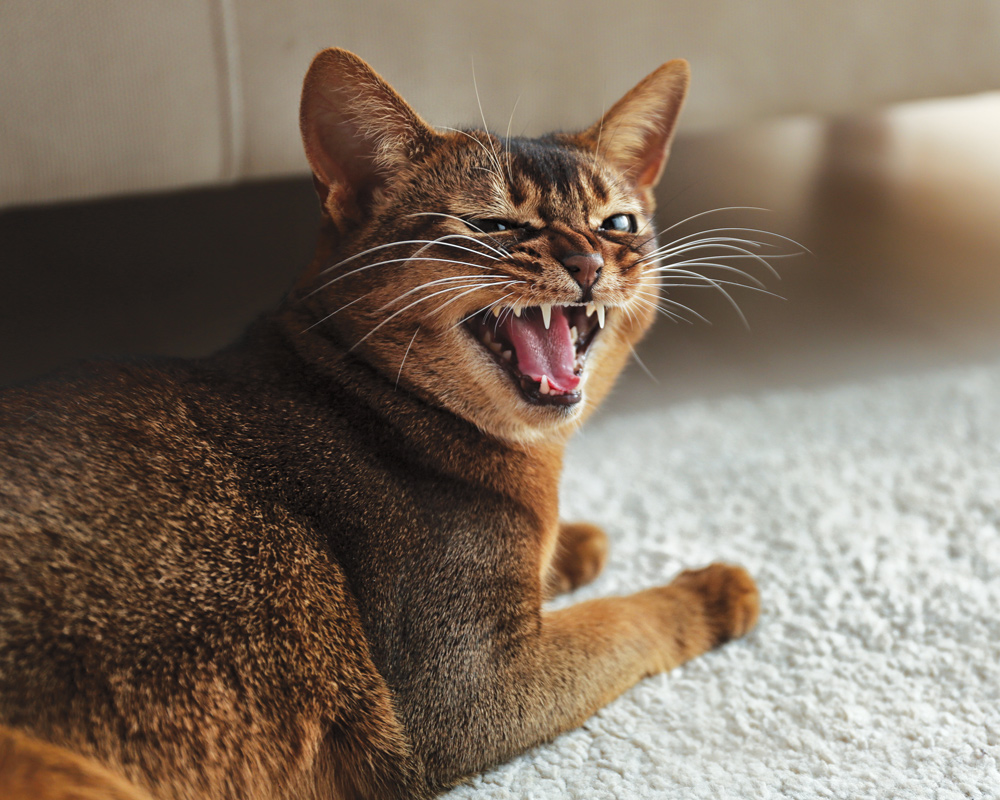
Photo: bigstock.com/New Africa
PROBLEM:
» Aggression
Pain is often related to aggression. Cats may be irritable and may lash out at humans and their feline housemates due to pain, itch, or overall discomfort. This manifests as a behaviour problem, but we need to look at the whole picture.
POSSIBLE CAUSES:
Is the cat obese? Perhaps they have not been able to reach their back with their own tongue to groom in years. The result is petting-induced aggression. Petting can be painful or over-stimulating, resulting in biting and swatting at the human who is doing the petting.
Cats with fleas are itchy, irritable, and have a shorter fuse, resulting in petting intolerance and aggression among housemates. Overweight cats with fleas suffer more. Thin cats can groom away all evidence of fleas, but obese cats cannot reach to self-sooth and groom away the ectoparasites.
“Petting can be painful or overstimulating, resulting in biting & swatting.”
If petting-induced aggression persists, the patient may have petting intolerance or hyperesthesia syndrome requiring further vet care and recommendations. Regardless, it is best to leave these cats wanting more. If five strokes gets you bitten, stop at three. Leave them longing to be touched rather than pushing them over the edge! Stick to the head, neck and chin where most cats prefer to be pet.
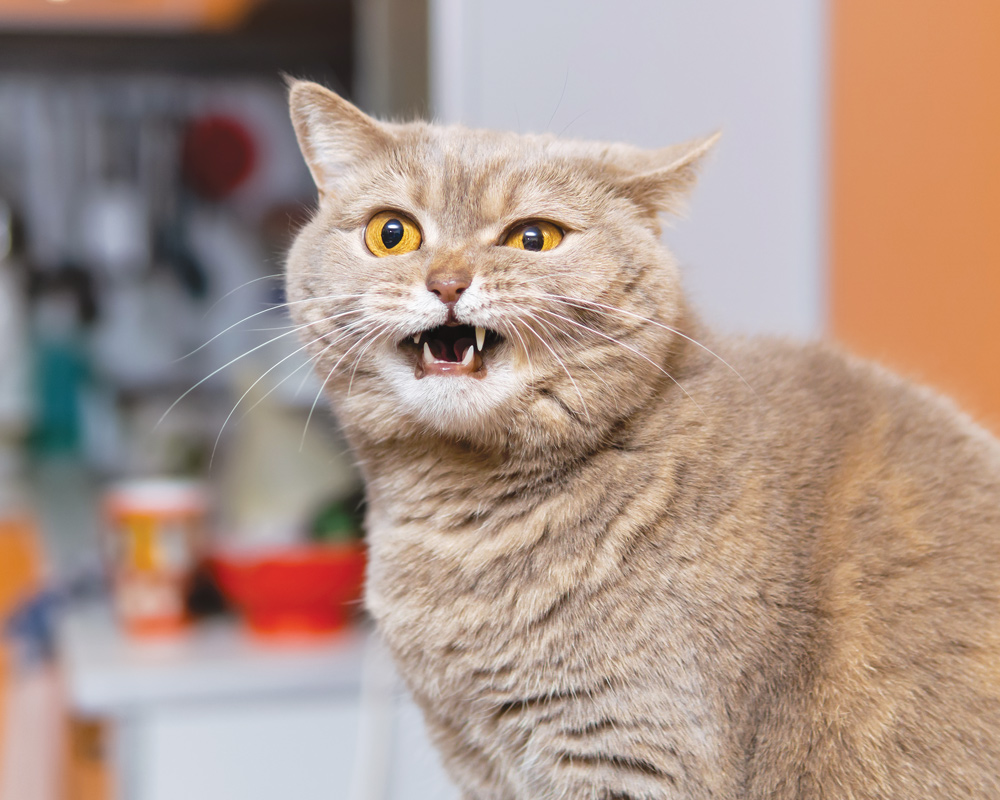
Photo: bigstock.com/Evgeny Haritonov
PROBLEM:
» Excessive Vocalization
POSSIBLE CAUSES:
Excessive vocalization is one of the most common symptoms of hyperthyroidism in cats.
Hypertension is another disease process that is still often undertreated and causes classic signs of irritability and excessive vocalization.
Cognitive dysfunction and/or deafness are other reasons that a cat could become excessively vocal. For cognitive dysfunction, early intervention is key to slowing and controlling the symptoms. Increasing enrichment (food puzzles and novel environmental changes) are great for this.
While it is true that many cats have good old-fashioned behaviour challenges that their human caregivers cannot tolerate, in many cases, these behaviours started due to an underlying undiagnosed or undertreated medical problem. Behavioural therapy may very well be needed and indicated, but a thorough work up and medical evaluation are required if successful resolution is to be achieved.
Join the newsletter and never miss out on cat content again!
"*" indicates required fields
By clicking the arrow, you agree to our web Terms of Use and Privacy & Cookie Policy. Easy unsubscribe links are provided in every email.





